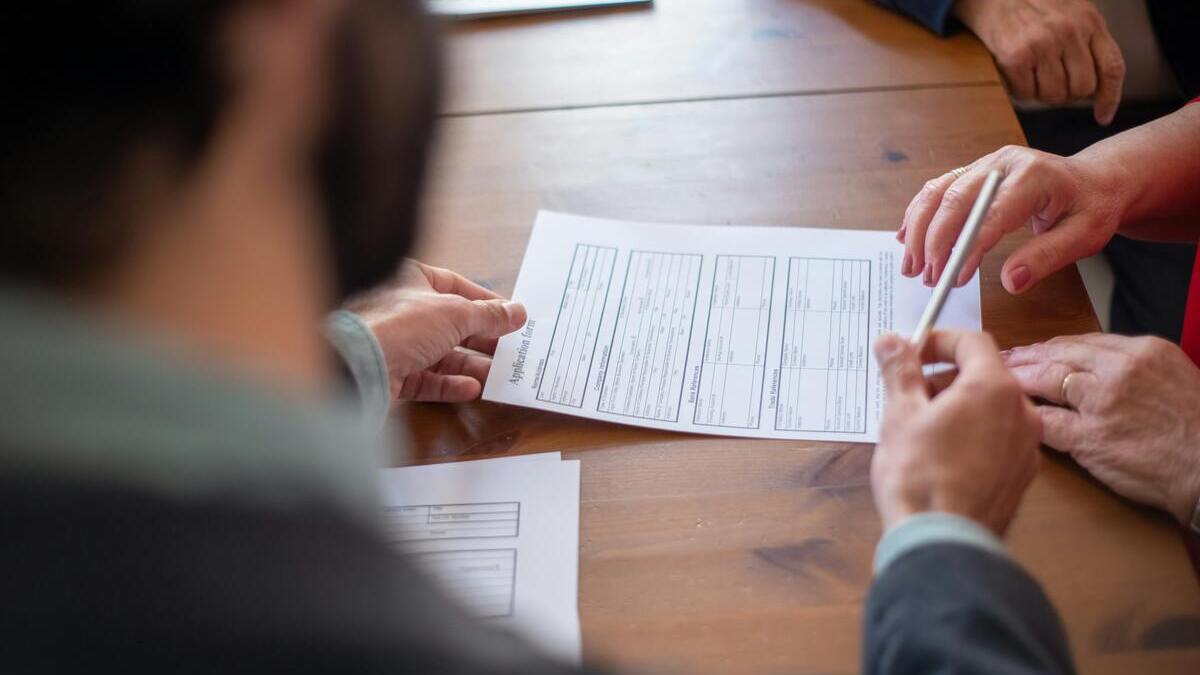
A personal loan can be the cash boost you're looking for when everyday expenses arise. Whether you're looking to purchase a car, go on a holiday, fund a wedding, or even consolidate your existing debts, applying for a personal loan could be a quick and easy way to access funds. So, how exactly do you apply for a personal loan? Here's exactly what you need to know about the application process.
What steps are involved in applying for a personal loan?
1. Conduct some research to find the right loan for you
Comparing different loans online and working out what best suits your needs is an important first step. You want to work out what type of personal loan you're after, as there isn't just one type of product to choose from. There are:
-
Secured personal loans offering low interest rates but require collateral
-
Unsecured personal loans that don’t require collateral but often come with higher rates
-
Car loans are specifically designed for vehicle purchases
-
Debt consolidation loans to manage multiple debts
-
Student loans are best for education costs
-
Line of credit loans offer ongoing access to funds as needed
Once you've decided on the type of personal loan you want, the next step is to research what providers on the market are offering including:
Interest rate
Interest rates and fees will vary from lender to lender, and even a small difference can make a big impact on the overall cost of the loan. A secured loan will generally have a lower interest rate as the loan is secured against an asset. This means there's less risk involved for the lender.
Comparison rate
If you want to work out the true cost of the loan, including interest and fees, it's important to look at the comparison rate. This is something lenders are required to list so you know what you're signing up for - you get a better picture of your potential costs.
Fees and charges
Look out for application fees, ongoing fees, missed repayment fees and early exit fees.
Loan term
Consider how long you have to pay the loan back. While a five-year term may have lower repayments than a one-year term, you'll likely pay more interest on the longer loan term. Not all lenders offer the same loan term.
Extra payments and redraw
If you're after flexibility and unique features, find out which lenders offer penalty-free additional repayments and redraw facilities. These will allow you to lower the interest payable over the life of the loan and potentially shorten the term considerably.
Explore competitive personal loans from banks and lenders across Australia. Check out the table below to help assess your options while protecting your credit score and increasing your chances of approval.
2. Decide how much to borrow
In order for the loan application to be successful, you'll need to be able to meet the repayments, so it's essential that you work out the correct amount to borrow. After all, you don't want to go through the hassle of applying for a personal loan only to find out you were unsuccessful in the end.
3. Check your credit score
It's generally a good idea to check your credit history before applying for any type of loan. Not only does it increase your chance of being approved, but it could also grant you access to better interest rates.
An excellent score is anywhere between 833 and 1,200 (if you're using Equifax) or between 800 and 1,000 with other agencies such as illion or Experian. A good score is anywhere from 500 to 800, and a poor score is usually below 400.
Ideally, you want your credit score to sit in the upper ranges, so make sure you're paying your bills on time and working to reduce your existing debts (if you have any).
4. Get assessed by your chosen lender
The next step in the personal loan process is pretty straightforward - apply online and get an answer about your eligibility. Eligibility criteria will likely vary by the lender, however, these are the typical criteria you'll need to meet:
-
Be at least 18 years old
-
Hold citizenship or permanent residency in Australia, or have the right to work in Australia
-
Currently employed and have a regular source of income
-
Have a good credit rating and history
-
Must be free from bankruptcy for the last seven years
5. Gather your supporting documents
When applying for a personal loan, there are certain documents you'll need to provide to the lender to prove your identity, income, and your ability to repay the loan. You may need to show one or more of the following.
-
Proof of identity such as a driver’s licence, passport, or birth certificate (100 points of ID)
-
Personal information, including your name, address, and contact details.
-
Proof of income, such as recent payslips and bank statements
-
Details of your assets, including vehicles and property
-
Monthly expenses, including rent or mortgage repayments, utilities, and similar bills
If you are self-employed, you will need to provide at least two Notices of Assessment from the Australian Taxation Office, or in many cases, two years' worth of Business Activity Statements (BAS).
6. Submit your application
Once you've completed all the previous steps, you're ready to apply. Typically, you can apply for a personal loan online, over the phone, or in a bank branch in person - it all depends on the lender you choose.
Can you apply for more than one personal loan?
Yes, it’s possible to apply for multiple personal loans at the same time. But proceed cautiously. Doing so within a short period can have unintended consequences, particularly for your credit score.
When you apply for multiple loans, each lender performs a credit check. This is recorded on your credit report. Too many applications in a short timeframe can be a red flag for banks, signalling that you may be in financial distress or are overextending yourself.
Rejections also affect your credit, and multiple ones will compound the negative effect. So it’s crucial to take a targeted approach before applying.
Why personal loan applications get rejected
Multiple factors determine whether or not your personal loan application gets approved or rejected. Whether it's creditworthiness or application details, here’s a quick look at the key factors that you should keep in mind:
Low credit score
This is one of the first things banks look at, so if your score is too low, it may signal to lenders that you’re a higher risk. This could be due to missed or late payments, high credit card balances, or too many recent credit card or loan applications.
Insufficient income
Lenders should be able to see that you can afford the loan you’re planning to take out. This means that they need to see that you earn enough to comfortably meet repayments.
High existing debt
If you already have multiple loans or large outstanding debts, lenders are more likely to view you as a higher credit risk, reducing your chances of approval.
Unstable employment
If you’ve recently changed jobs, work on a casual basis, or show large gaps in your employment history, then it may also hurt your chances of getting your personal loan approved.
Some other factors may include incomplete information on your application, ineligibility based on lender criteria, and inconsistent bank statements.
What to do if your personal loan is rejected
It isn’t the end of the road if your application gets rejected. You can follow these steps to improve your chances:
-
Ask the lender why, some banks are willing to offer insights into the decision.
-
Check your credit report to make sure it’s up to date and correct.
-
Improve your financial situation by paying down debt, increasing savings, or stabilising income before reapplying.
As mentioned earlier, multiple inquiries (and multiple rejections) signal risk, so it’s crucial to wait before applying again. Waiting allows for recovery, giving your credit score the chance to rebound and giving you time to focus on improving your financial profile.
Can you still apply with bad credit?
If you’re crunched for time and need a personal loan as soon as possible, having a poor credit score doesn’t automatically disqualify you. But it does make the process a bit more challenging. You’ll likely get limited loan options and may be stuck with high interest rates and fees.
Some lenders specialise in bad credit loans, but they often come with higher risk. Improving your credit before applying can save you money in the long run.
How long does it take to get approved for a personal loan?
Typically, you will be notified of your approval within 1-2 business days of submitting. However, there are some lenders out there that can give you approval within a few hours or even within minutes. Be wary of lenders offering 'fast, easy cash' as these may be payday loans with shorter terms, attracting much higher interest rates.
Still wondering if you can afford a personal loan? Try our budget or loan repayment calculators to get a better idea. Ready to begin? Compare personal loans now.
Photo by Kampus Production via Pexels


